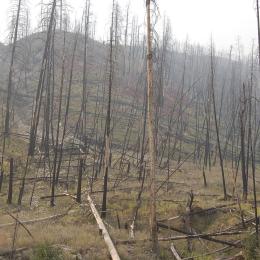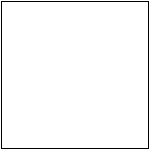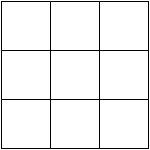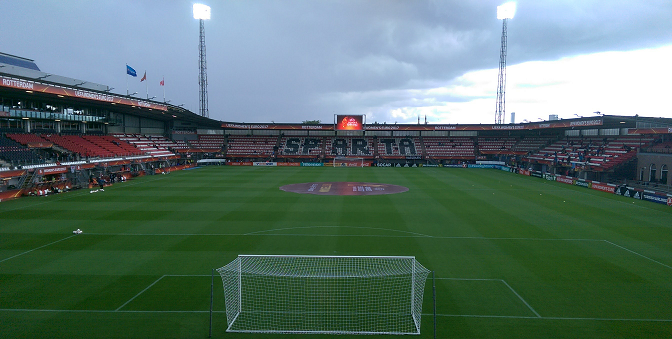1.4 Converting Area
Applications
After many wildfires, vegetation returns naturally; however, in cases of steep slopes prone to erosion or where fuels have built up and fires burn hot, we may choose to speed up natural processes by reseeding. We generally develop seeding prescriptions in pounds of live seed (pls) per acre.
Let's say you are managing reseeding in a rectangular burn area that measures roughly one mile by 1/2 mile. Your seed mix will be applied at a rate of 20 pounds pls per acre. How many pounds of seed will you need for this project?

When we are converting between units of area, we need to be aware that square units behave differently than linear units. We'll begin by using our knowledge of linear units to investigate how area conversions are different.
Practice Exercises
- A hallway's floor is [latex]9[/latex] yards long and [latex]2[/latex] yards wide. Convert each measurement to feet, then determine the area of the floor in square feet.
- A hallway's floor has an area of [latex]18[/latex] square yards. Determine the area of the floor in square feet.
- A tabletop measures [latex]24.0[/latex] inches by [latex]42.0[/latex] inches. Convert each measurement to feet, then determine the area of the tabletop in square feet.
- A tabletop has an area of [latex]1,008[/latex] square inches. Determine the area of the tabletop in square feet.
It may help to visualize the relationship between square yards and square feet. Consider a square yard; the area of a square with sides [latex]1[/latex] yard long.

We know that [latex]1[/latex] yard = [latex]3[/latex] feet, so we can divide the square into three sections vertically and three sections horizontally to convert both dimensions of the square from yards to feet.

This forms a [latex]3[/latex] by [latex]3[/latex] grid, which shows us visually that [latex]1[/latex] square yard equals [latex]9[/latex] square feet! Instead of [latex]1[/latex] to [latex]3[/latex], the conversion ratio for the areas is [latex]1[/latex] to [latex]3^2[/latex], or [latex]1[/latex] to [latex]9[/latex].
Here's another way to think about it without a diagram: [latex]1\text{ yd}=3\text{ ft}[/latex], so [latex](1\text{ yd})^2=(3\text{ ft})^2[/latex]. To remove the parentheses, we must square the number and square the units: [latex](3\text{ ft})^2= 3^2\text{ ft}^2=9\text{ ft}^2[/latex].
More generally, we need to square the linear conversion factors when converting units of area. If the linear units have a ratio of [latex]1[/latex] to [latex]n[/latex], the square units will have a ratio of [latex]1[/latex] to [latex]n^2[/latex].
Area Conversion Factors
[latex]1[/latex] acre = [latex]43560 ft^2[/latex]
[latex]1[/latex] hectare = [latex]2.471[/latex] acres
If you know the conversion for other units of length, you can build your own conversion factor for units of area.
If you're curious, an acre is defined as the area of a [latex]660[/latex] foot by [latex]66[/latex] foot rectangle. (That’s a furlong by a chain!). Why? Because that's the amount of land that a medieval farmer with a team of eight oxen could plow in one day.)[1]
In forestry, because of our close association with land surveys, we work in units of chains. Do you know how many paces are in a chain for you on flat ground? What about on a steep hillside?
An acre is defined as a unit of area; it would be wrong to say "acres squared" or put an exponent of [latex]2[/latex] on the units.
Examples: Converting Units of Area - One Step
A) 1,500 ft2 to acres B) 4.2 acres to ft2 C) 6 in2 to cm2 D) 500 in2 to ft2 E) 10 acres to hectares
Practice Exercises
- A rectangular sheet of fabric has an area of [latex]6[/latex] square yards. Find its area in square inches.
- A proposed site for an elementary school is [latex]600[/latex] feet by [latex]600[/latex] feet. Determine its area in acres, rounded to the nearest tenth.
Now let's take a look at converting area using the metric system.
Practice Exercises
- A hallway's floor is [latex]9[/latex] meters long and [latex]2[/latex] meters wide. Convert each measurement to centimeters, then determine the area of the floor in square centimeters.
- A hallway's floor has an area of [latex]18[/latex] square meters. Determine the area of the floor in square centimeters.
- A sheet of A4 paper measures [latex]210\text{ mm}[/latex] by [latex]297\text{ mm}[/latex]. Convert each measurement to centimeters, then determine the area in square centimeters.
- A sheet of A4 paper has an area of [latex]62,370[/latex] square millimeters. Determine the area in square centimeters.
The conversions in the metric system are all powers of ten, which means they are all about moving the decimal point.
A hectare is defined as a square with sides [latex]100[/latex] meters long. Dividing a square kilometer into ten rows and ten columns will make a [latex]10[/latex] by [latex]10[/latex] grid of [latex]100[/latex] hectares. As with acres, it would be wrong to say "hectares squared" or put an exponent of [latex]2[/latex] on the units.
Examples: Converting Units of Area - Two Step
A) 20,000 cm2 to yd2 B) mi2 to in2 C) 1 chain2 to hectares
Practice Exercises
- A rectangular sheet of fabric has an area of [latex]60,000[/latex] square centimeters. Find its area in square meters.
- A proposed site for an elementary school is [latex]200[/latex] meters by [latex]200[/latex] meters. Find its area, in hectares.
Converting between the U.S. and metric systems will involve messy decimal values. For example, because [latex]1\text{ in}=2.54\text{ cm}[/latex], we can square both numbers and find that [latex](1\text{ in})^2=(2.54\text{ cm})^2=6.4516\text{ cm}^2[/latex].
Practice Exercises
- The area of Portland, Oregon is [latex]145\text{ mi}^2[/latex]. Convert this area to square kilometers.
- How many hectares is a [latex]5,\overline{0}00[/latex] acre ranch?
- A standard sheet of paper measures [latex]8.50[/latex] inches by [latex]11.00[/latex] inches. What is the area in square centimeters?
- A football pitch (soccer field) is [latex]100.0[/latex] meters long and [latex]70.0[/latex] meters wide. What is its area in square feet?

Examples: Applied Area
A) Let's say you are managing reseeding in a rectangular burn area that measures roughly one mile by 1/2 mile. Your seed mix will be applied at a rate of 20 pounds pls per acre. How many pounds of seed will you need for this project?
B) A riparian protection zone is 30 feet on each side of a stream that runs for 150 yards through your harvest unit. How many acres are within the riparian protection zone?
Problem Set 1.4
- Convert 8,620 [latex]m^2[/latex] to acres.
- Convert 3 [latex]mi^2[/latex] to acres.
- Convert 1,500 [latex]ft^2[/latex] to hectares.
- Convert 1,500 [latex]ft^2[/latex] to [latex]in^2[/latex].
- Convert 1,500 [latex]ft^2[/latex]to [latex]cm^2[/latex].
- Convert 1 [latex]mi^2[/latex]to [latex]m^2[/latex].
- Convert 100,000 [latex]cm^2[/latex]to [latex]m^2[/latex].
- Convert 100,000 [latex]cm^2[/latex]to [latex]mi^2[/latex].
- If a field covers 22 hectares, how many square feet are in it?
- Timberline Lodge is a 40,000 square foot historic hotel on the slopes of Mount Hood. How many square meters of space does it offer? How many acres?
- Source: https://en.wikipedia.org/wiki/Acre ↵

